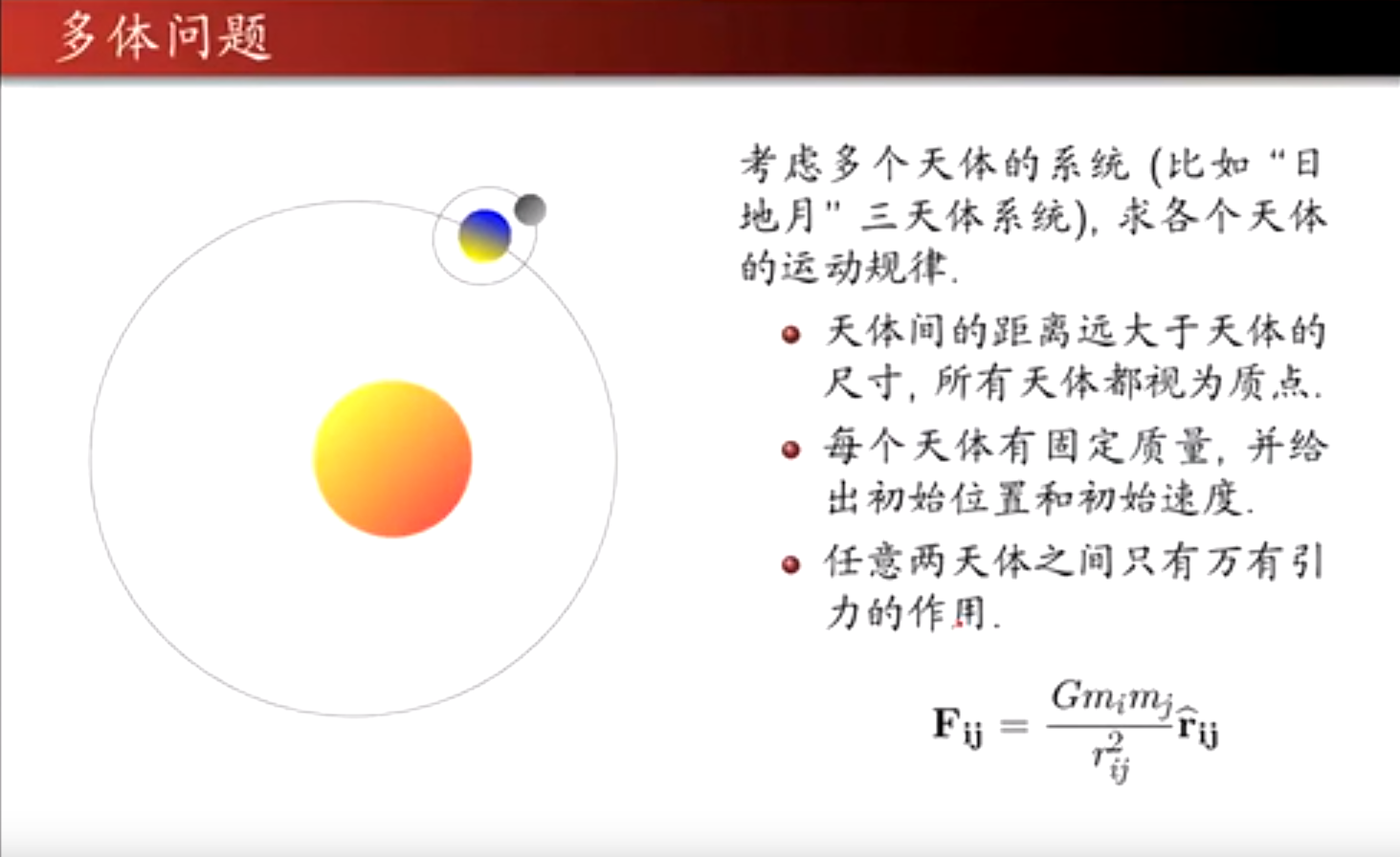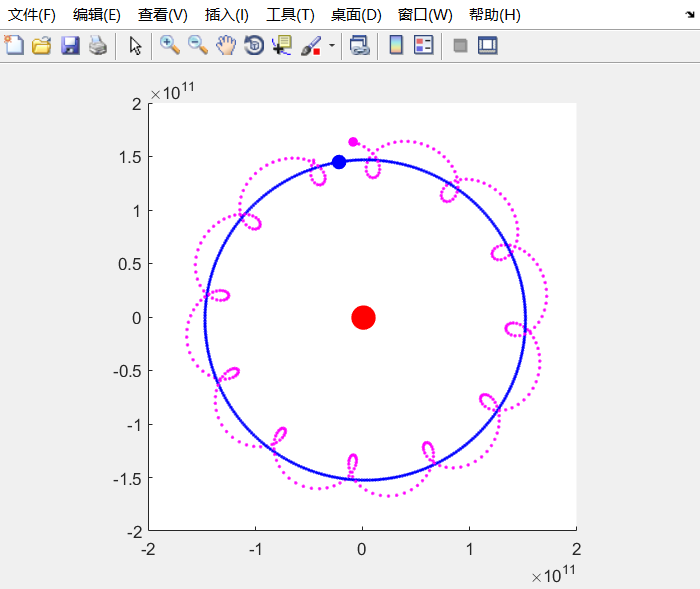问题及分析

Matlab代码
给出了核心逻辑的注释,作图暂时还不太了解。
function SunEarthMoon % M函数文件
load planets; % 将planets.mat中的变量mass、position、velocity加载过来
[sun, earth, moon] = deal(18, 3, 25); % sun、earth、moon分别是18、3、25行
list = [sun, earth, moon]; % 1行3列矩阵
G = 6.67e-11; % gravitational constant
dt = 24*3600; % 作图的时间间隔为一天,每天有24*3600秒
N = length(list); % N=3,三个天体
mass = mass(list); % N行1列矩阵,N个天体的质量
position = position(list,:); % N行3列矩阵,N个天体的坐标,坐标是1行3列的行向量,三个方向的分量
velocity = velocity(list,:); % N行3列矩阵,N个天体的速度,速度是1行3列的行向量,三个方向的分量
h = plotplanets(position); %作图函数
for t = 1:365 % 图中总时间为一年,一年365天
plotplanets(position,h); %
force = zeros(N,3); % N行3列零矩阵,一行表示某个天体在三个方向上的受力
for i = 1 : N % 遍历计算各天体间的万有引力。组合数C(3,2)
Pi = position(i,:); % 某天体坐标
Mi = mass(i); % 某天体质量
for j = (i+1):N %the i+1 is to create diagonal
Mj = mass(j); % 另一天体质量
Pj = position(j,:); % 另一天体坐标
dr = Pj - Pi; % 两天体的相对,1行3列矩阵
forceij = G*Mi*Mj./(norm(dr).^3).*dr; % 两天体之间的力,1行3列的向量
force(i,:) = force(i,:) + forceij; % 规定正方向,将力计算进矩阵
force(j,:) = force(j,:) - forceij; % 反作用力与作用力方向相反,将力计算进矩阵
% 上两行可替换为force([i,j],:) = force([i,j],:)+[forceij; -forceij];
end
end
velocity = velocity + force ./ repmat(mass,1,3)*dt; % v=v+a*dt a=F/m
position = position + velocity*dt; % r=r+v*dt
end
% -------------------------------------------------------------------------
function h = plotplanets(pos,h) %
scale = 50;
total_planets = size(pos,1);
[sun, earth, moon] = deal(1, 2, 3);
radius = [50, 30, 20];
marker = {'.r', 'b.','m.'};
pos(moon,:) = pos(earth,:) + scale*(pos(moon,:)-pos(earth,:));
if nargin==1
hold on; axis image
axis( [-2 2 -2 2]*1e11 );
for i = 1:total_planets
if any(i == [sun, earth, moon])
h(i) = plot(pos(i,1),pos(i,2),marker{i},'markersize',radius(i));
plot(pos(i,1), pos(i,2), marker{i}, 'markersize',5);
else
h(i) = plot(pos(i,1), pos(i,2), 'k.', 'markersize', 20);
plot(pos(i,1), pos(i,2), 'k.', 'markersize',5);
end
end
else
for i = 1:total_planets
set(h(i), 'Xdata', pos(i,1) , 'Ydata', pos(i,2) )
if any(i == [sun, earth, moon])
plot(pos(i,1), pos(i,2), marker{i}, 'markersize',5);
else
plot(pos(i,1), pos(i,2), 'k.', 'markersize',5);
end
end
drawnow
end
结果

作者:@臭咸鱼
本文为作者原创,转载请注明出处:https://chouxianyu.github.io
欢迎讨论交流!